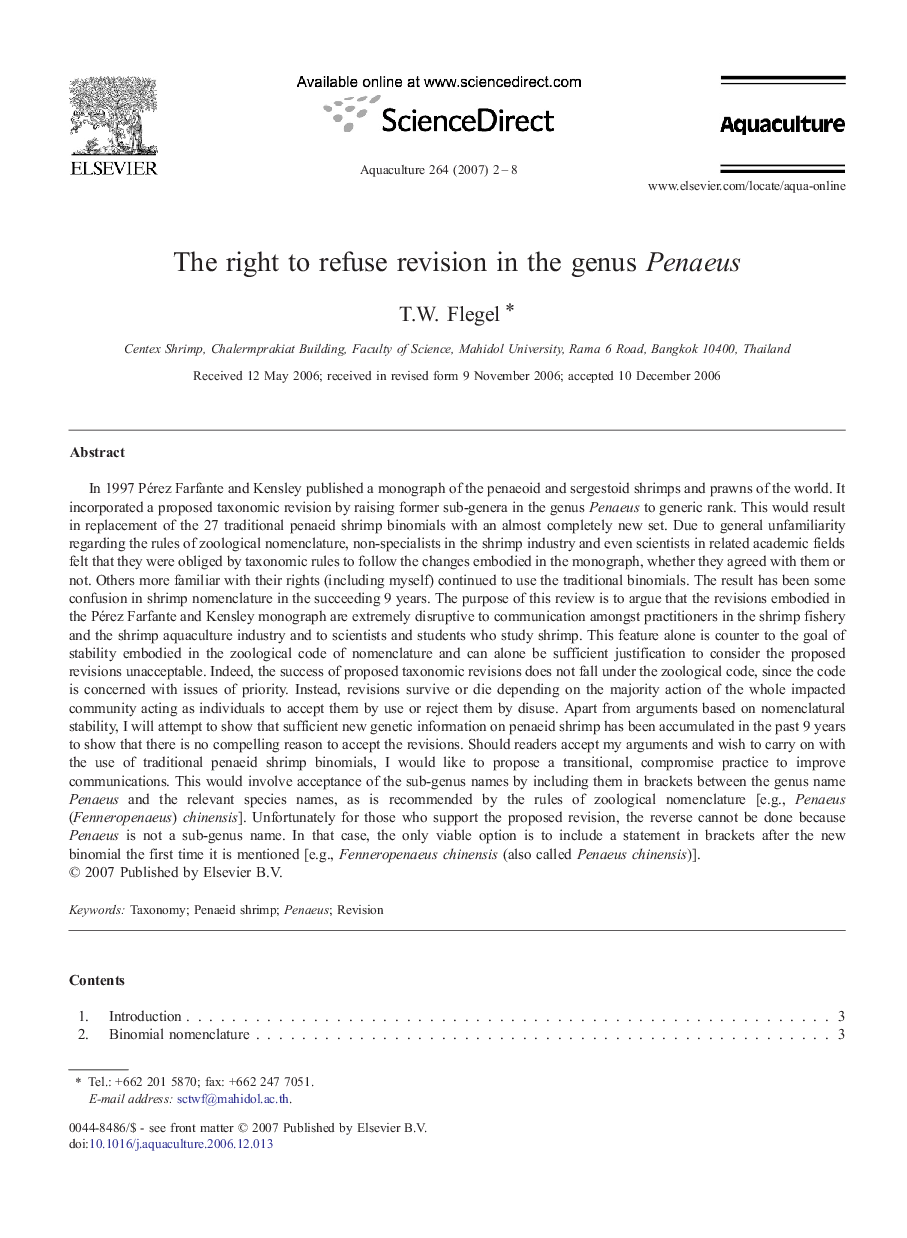| کد مقاله | کد نشریه | سال انتشار | مقاله انگلیسی | نسخه تمام متن |
|---|---|---|---|---|
| 2425356 | 1552978 | 2007 | 7 صفحه PDF | دانلود رایگان |

In 1997 Pérez Farfante and Kensley published a monograph of the penaeoid and sergestoid shrimps and prawns of the world. It incorporated a proposed taxonomic revision by raising former sub-genera in the genus Penaeus to generic rank. This would result in replacement of the 27 traditional penaeid shrimp binomials with an almost completely new set. Due to general unfamiliarity regarding the rules of zoological nomenclature, non-specialists in the shrimp industry and even scientists in related academic fields felt that they were obliged by taxonomic rules to follow the changes embodied in the monograph, whether they agreed with them or not. Others more familiar with their rights (including myself) continued to use the traditional binomials. The result has been some confusion in shrimp nomenclature in the succeeding 9 years. The purpose of this review is to argue that the revisions embodied in the Pérez Farfante and Kensley monograph are extremely disruptive to communication amongst practitioners in the shrimp fishery and the shrimp aquaculture industry and to scientists and students who study shrimp. This feature alone is counter to the goal of stability embodied in the zoological code of nomenclature and can alone be sufficient justification to consider the proposed revisions unacceptable. Indeed, the success of proposed taxonomic revisions does not fall under the zoological code, since the code is concerned with issues of priority. Instead, revisions survive or die depending on the majority action of the whole impacted community acting as individuals to accept them by use or reject them by disuse. Apart from arguments based on nomenclatural stability, I will attempt to show that sufficient new genetic information on penaeid shrimp has been accumulated in the past 9 years to show that there is no compelling reason to accept the revisions. Should readers accept my arguments and wish to carry on with the use of traditional penaeid shrimp binomials, I would like to propose a transitional, compromise practice to improve communications. This would involve acceptance of the sub-genus names by including them in brackets between the genus name Penaeus and the relevant species names, as is recommended by the rules of zoological nomenclature [e.g., Penaeus (Fenneropenaeus) chinensis]. Unfortunately for those who support the proposed revision, the reverse cannot be done because Penaeus is not a sub-genus name. In that case, the only viable option is to include a statement in brackets after the new binomial the first time it is mentioned [e.g., Fenneropenaeus chinensis (also called Penaeus chinensis)].
Journal: Aquaculture - Volume 264, Issues 1–4, 6 April 2007, Pages 2–8